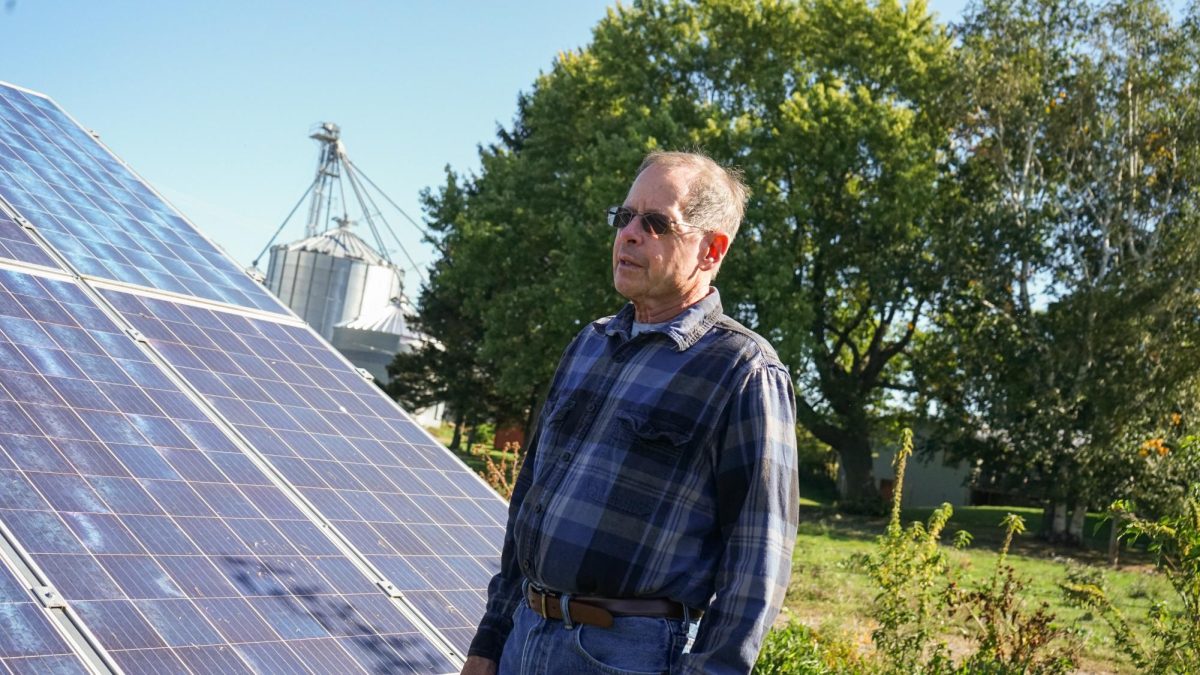Fall Creek, a stream that runs into the southern end of Lake Cayuga, shows phosphate levels have increased by over 50 percent in some areas since 2013, notably culverts near farming communities.
From December 2013 to 2014, total phosphorus levels near the Cayuga Street Bridge and Tillotson Road have increased by 1/3 and by 20 percent at Chaplin Road, according to the Community Science Institute lakes and streams database. The Environmental Protection Agency regulated level of .05 mg/l if streams run into lakes is far off from Fall Creek’s water samples.
“If you keep adding phosphorus [to water] and raise the concentration, then you speed up growth [of algae],” Community Science Institute Executive Director Steve Penningroth said. “If you get a lot of algae, they die and are decomposed by decomposer organisms. The decomposer organisms are aerobic, meaning they use oxygen to metabolize the algae that is dead, so now the fish die too.”
While phosphorus is a natural part of water systems, too much of this nutrient can cause algae growth to increase faster than ecological systems can handle. This results in eutrophication, which decreases dissolved oxygen that fish need to survive and reduces the amount of sunlight that is able to penetrate the water, making it difficult for plants to receive adequate sunlight.
80 percent of the phosphorus found in the Cayuga Watershed stems from streams, while 10 to 15 percent comes from sewage treatment plants, and the remaining amounts come from storm water Penningroth said.
Virgil Creek is a tributary to Fall Creek which runs into the southern end of Lake Cayuga, an area noted on the Environmental Protection Agency (EPA) 303d list of impaired water bodies since 1998. This can be attributed to nutrient pollutants including phosphorus runoff from local dairy farms, storm water and wastewater.
Understanding the phosphorus problem in the creeks stems from this year’s treacherous winter. Non-point pollution from manure by local farms is being spread across frozen ground and, instead of making it into the soil, is pushed into the streams by runoff, potentially harming Fall Creek, a drinking water supply of Cornell University.
“It’s an ongoing saga of how you adequately regulate the dairy farmers to get manure nutrients in the soil,” Fall Creek Watershed Committee Chair Gregg McConnell said. “There could be a fair amount of manure that doesn’t make it into the soil and right into our streams.”
A study done by Duke University across the United States shows that human-induced eutrophication, from things like farming and building roadways, is much more rapid than natural eutrophication. Natural eutrophication is a process that takes centuries, while human-induced eutrophication could take as little as a single decade. The bodies of water that suffer may take up to one thousand years to recover.
The Fall Creek Watershed Committee looks to monitor Fall and Virgil creeks at numerous points in order to get a better idea of the health effects of farms than regulatory bodies such as the New York State Department of Environmental Conservation can, Community Science Institute Board President David Weinstein explained.
“In order for us as citizens to take control and get changes made if there are problems, we need to identify when and where those problems are happening so we can go to our municipal governments and tell them, ‘I see an issue here, I would really like for you to get concerned about it too,’” said Weinstein.
The monitoring season will continue in late March. The scheduled monitoring date of March 2nd has been pushed back to March 30th due to dangerous ice shelves on the creeks.













